This article was published in Scientific American’s former blog network and reflects the views of the author, not necessarily those of Scientific American
Flying Dinosaurs: How Fearsome Reptiles Became Birds, by John Pickrell. Readers of this blog will be familiar with the robust body of fossil evidence which shows that birds are theropod dinosaurs, that features long regarded as unique to birds actually evolved deep within Theropoda, and that there is no longer any clear demarcation between birds and bird-like non-birds. It’s all shades of grey.
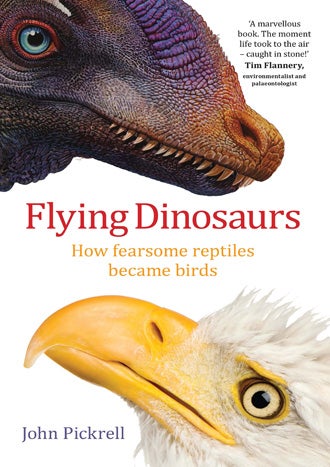
My copy of the book does not have that quote from Tim Flannery at top right. Credit: NewSouth Books
Flying Dinosaurs reviews our current understanding of bird origins, focusing in particular on recent fossil discoveries and newly proposed ideas. I will admit that I initially suspected this book to be another retelling of all the things we’ve learnt about bird origins and bird-like non-bird theropods since the mid-1990s – in other words, an updated version of Pat Shipman’s 1999 Taking Wing: Archaeopteryx and the Evolution of Bird Flight. But that’s not a fair characterisation. Flying Dinosaurs is less analytical than Shipman’s book – my recollection of that work is that a great part of it was devoted to a weighing up of the two primary schools of thought on bird origins (the Feducciaries vs the Ostromids) – and more of a popular run-through of the modern state of our knowledge. It pretty much succeeds, and is very well written.
On supporting science journalism
If you're enjoying this article, consider supporting our award-winning journalism by subscribing. By purchasing a subscription you are helping to ensure the future of impactful stories about the discoveries and ideas shaping our world today.
It covers a bit more than the topic of bird origins and recently discovered near-bird fossils alone: chapters also cover the international trade in fossils, the reproductive strategies likely used by extinct dinosaurs, the preservation of colour in dinosaur fossils, the evolution of feathers, Jack Horner’s ontogenetic morphing hypothesis and chickensaurus project, and the end-Cretaceous extinction event. A lot of this is great and carries the story right up to the minute, but some of it does feel a bit out of place.
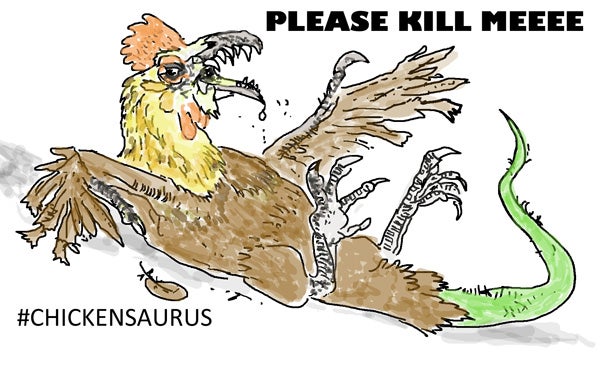
Yay chickensaurus, such a fine idea. Credit: Darren Naish
A colour plate section features numerous handsome reconstructions and colour images of spectacular fossils. I will admit that one thing I don’t like is the frequent use of quoted sections of text – I much prefer to see an author describe things in their own words – but this is a minor quibble. I’m likewise not personally too keen on that subtitle (“How Fearsome Reptiles Became Birds”)… Anyway, Flying Dinosaurs is a great, easily absorbed read that covers a huge range of subjects. I would recommend it to anyone who wants to be brought up to speed on our knowledge of the ‘bird-theropod’ transition.
John Pickrell. 2015. Flying Dinosaurs: How Fearsome Reptiles Became Birds. Columbia University Press, New York, pp. 215. ISBN 978-0-231-17178-6. Here on amazon.Here on amazon.co.uk.
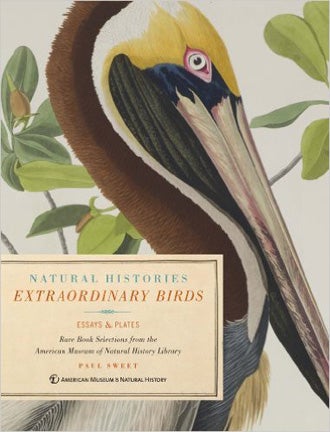
The cover of the box that contains the book and plates. Credit: amazon.co.uk
Extraordinary Birds, by Paul Sweet. The literature on birds – the historical literature, the technical literature, the popular literature – is renowned for the phenomenal artwork so often produced to accompany it. Colour plates, depicting bird species in life, have been a mainstay of monographs for as long as such works have existed, and woodcuts and other illustrations have accompanied encyclopaedias and other works for even longer. So attractive (and often famous) are these sorts of illustrations – and such is the popularity of birds and imagery depicting them – that there has long been a tradition of removing them from their original works and selling them as stand-alone prints. Wouldn’t it be a great idea if someone were to produce a work in which a wide selection of such artworks were available in this very form? This is exactly what has happened.
Extraordinary Birds is not a book, but a boxed collection of replica plates and a book, compiled and written by Paul Sweet and utilising originals housed in the collections of the American Museum of Natural History Library. The 40 prints comprise examples from the works of Audubon, Gould, Lear, Wolf, Keulemans, Fuertes and others. They’re printed on high quality paper, faithfully reproduce the colours of the originals, and are ready for framing. I don’t have a spare wall big enough for 40 framed prints, but I wish I did. It’s a spectacularly good idea.
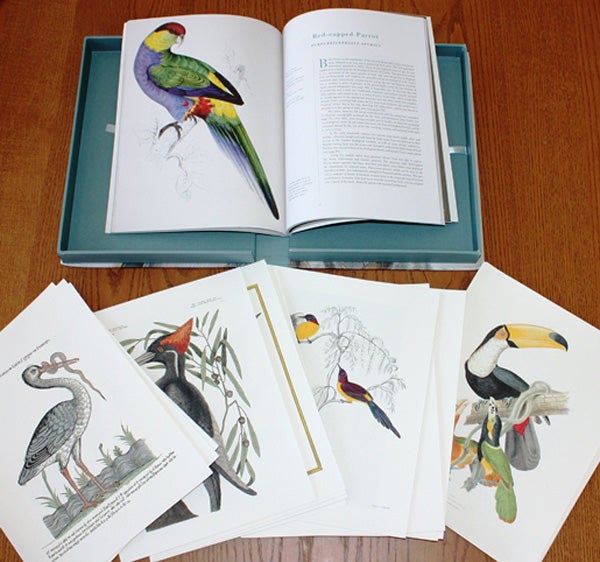
The look of the book itself, and of some of the prints. Credit: The Birder's Library
The accompanying softback book is an excellent and extremely well illustrated introduction to ornithology and specifically to the history of birds in art. Essays accompany each of the 40 plates, each one providing biographical information on the artist and on the scientific relevance of the art. Those well versed in the history of ornithology and the artists, naturalists and explorers who have contributed to ornithological discovery will find some of the details here familiar; such readers will very much be in the minority, however, and there is a huge amount here not readily available elsewhere.
As both a review of ornithological history and a collection of fine artworks, Extraordinary Birds is exceptionally recommended and those seriously interested in the history of ornithology should obtain it.
Paul Sweet. 2013. Extraordinary Birds: Rare Book Selections from the American Museum of Natural History Library. American Museum of Natural History, New York, pp. 134, ISBN 978-1-4549-0659-9. Here on amazon.Here on amazon.co.uk.
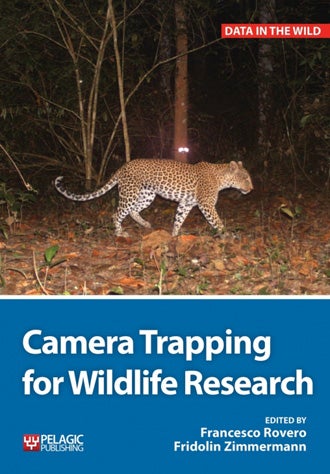
The cover of the volume features a leopard camera-trapped in the Udzungwa Mountains of Tanzania. Credit: Pelagic Publishing
Camera Trapping for Wildlife Research, edited by Francesco Rovero and Fridolin Zimmerman. Remote cameras, triggered by movement, designed to automatically take still or moving images of animals that pass in front of them, and popularly termed ‘camera traps’, have become an integral part of 21st century wildlife research worldwide. Technically speaking, camera trapping is not new – it’s been around since the 1890s. But the number of camera trap studies has increased exponentially since about 2006, and those who keep tabs on the conservation, wildlife management and behavioural literature will know that camera trap use has allowed the photographic documentation of many species for the first time, or at least in areas or environments where they were not documented before. As technology has improved and as prices have come down, use of the cameras concerned has spread outside of the scientific research community and into the recreational hunting and animal-seeking industry (yeah, bigfoot, British big cats, Loch Ness monsters…).
Francesco Rovero and Fridolin Zimmerman’s new multi-authored volume is therefore very timely and certainly provides an excellent introduction to both the camera trap literature and on how camera trap data can be utilised.
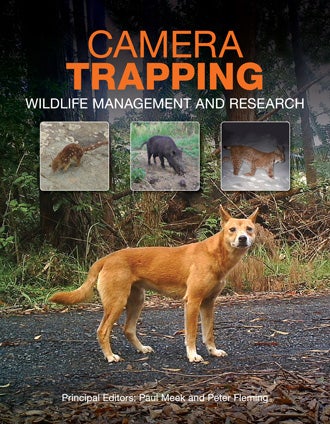
I feel duty bound to mention that there are other books with the term ‘Camera Trapping’ in the title. This is Meek & Fleming’s 2014 book. Credit: CSIRO
Most of the book’s 11 chapters review the use of camera trap data in calculating the abundance of a species in a given area and its use in monitoring studies. Much of this is, admittedly, heavy going to those not involved or especially interested in such studies. The book leads with an introduction to camera trapping in general by Rovero and Zimmermann: this is where we hear about recent discoveries made via the use of camera traps (Golden jackals Canis aureus in Switzerland, that kind of thing). The same authors also provide a chapter reviewing camera trap design and function and on how to use them.
Of the other contributions, I particularly liked Zimmerman et al.’s chapter on camera trap data as it pertains to behavioural studies. I also found Paul Meek and Zimmerman’s chapter on camera trapping and public engagement interesting. We are all quite used to camera trap images that show humans passing by and engaging in assorted behaviours. Well, there are parts of the world where those images really should not have been shared: they sometimes represent privacy violations, and camera-users need to make themselves aware of local policy and feelings towards non-consensual photography before doing anything with the images concerned.
Graphs, tables and digital maps appear throughout the volume; in addition there are images of in-situ camera traps in Rovero and Zimmermann’s chapter. Images of camera-trapped animals themselves appear in a few places: I know that the appearance of such images was not the raison d’etre of the book but I would still like to have seen more of them. Each chapter is fully referenced.
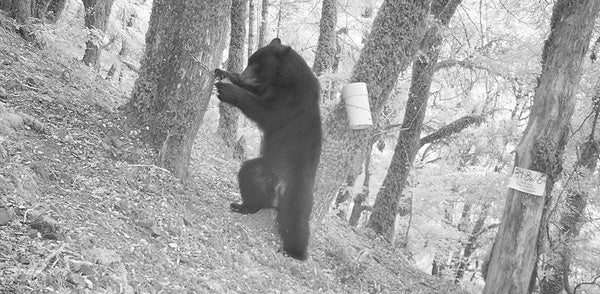
Camera trap image of a bear. Not a bigfoot. Bigfoot is able to avoid camera traps. Credit: Bureau of Land Management Oregon and Washington Flickr (CC BY 2.0)
As implied above, this is a sometimes heavy, technical work – more like the collected results of a technical symposium than the ‘how to’ guide I was initially expecting. It should definitely be obtained by technical researchers pursuing the application of camera trap data in their research but, more broadly, it includes at least something of interest to anyone curious about the technique and the results it can obtain.
It does not include a section on bigfoot.
Francesco Rovero and Fridolin Zimmerman. 2016. Camera Trapping for Wildlife Research. Pelagic Publishing, Exeter (UK), softback. pp. 293. £34.99. ISBN 978-1-78427-048-3. Here at Pelagic Publishing.Here at amazon.Here at amazon.co.uk.
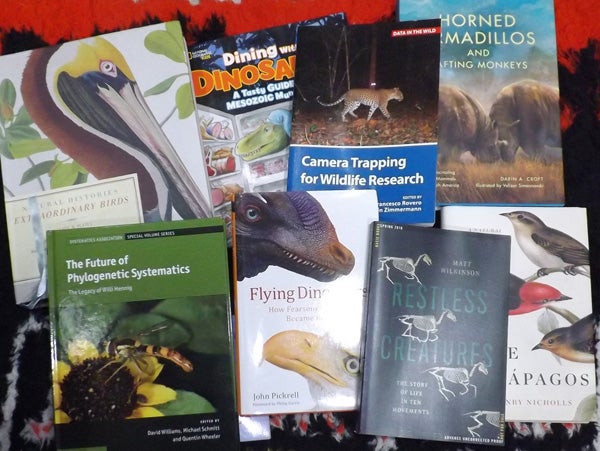
Books books books. Credit: Darren Naish
Several other recently obtained books are here in the Tet Zoo library and awaiting review; I aim to get to them in time. They include Henry Nicholls’s The Galápagos: A Natural History (2014, Basic Books), Hannah Bonner’s Dining With Dinosaurs: A Tasty Guide to Mesozoic Munching (National Geographic Kids, 2016), Matt Wilkinson’s Restless Creatures: the Story of Life in Ten Movements (2016, Basic Books), Williams et al.’s The Future of Phylogenetic Systematics: the Legacy of Willi Henning (2016, Cambridge University Press) and Darin Croft’s Horned Armadillos and Rafting Monkeys: the Fascinating Fossil Mammals of South America (2016, Indiana University Press). I am especially excited about the last of those listed titles. All I will say for now is that… hell yes, it does deliver!
For other recent Tet Zoo book reviews, see...